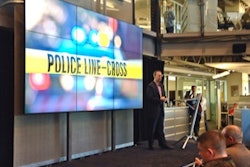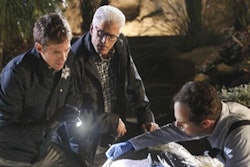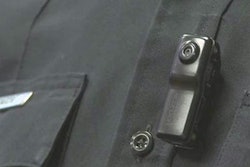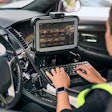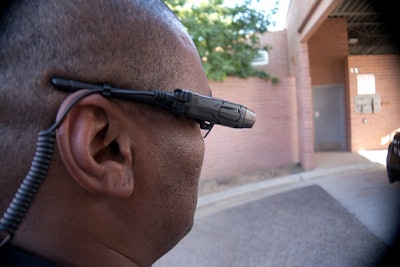 TASER Axon Flex (Photo: Mark W. Clark)
TASER Axon Flex (Photo: Mark W. Clark)
I recently had the opportunity to review the latest hardware offering from Vievu, the LE3 video system and the software package that goes along with it. (I've also used the TASER Axon Flex, a different type of officer-worn system.) This recent hands-on review got me thinking about the state of the industry for on-body video for law enforcement. We've had about five years of serious development of these small systems and have reached a point where we can take an objective look at the good and the not so good parts of the systems.
The good thing is that companies are making these things and making them quite good. The latest cameras are very handy and offer the opportunity to produce the best evidence of a police-citizen contact. There are countless examples of people's worst behavior and officers' best behavior captured for all the world to see. The reverse is also true.
If you've been in policing for any length of time, you can recite examples of confrontations that you would have liked to have recorded. Now there isn't much reason to not have the video cameras on-board. These little cameras are not that expensive and I bet most officers would like to have one. Most aren't that much different than a smart phone camera, but there is much more to on-body video for law enforcement.
The existence of these cameras has created a flurry of policy considerations and evidentiary issues to deal with. The biggest issue I seem to hear about is how to keep the digital files safe from tampering. But who are they trying to keep the files safe from? Officers?
Just about every company that makes the on-body cameras for police have software and storage packages to go along with the hardware. I have yet to see one that doesn't advertise that the files are tamper-proof, secure, safe from digital alteration, etc. How does that sit with the average officer who is sworn to the highest level of integrity?
I want to challenge the popular thinking on this much publicized security feature. I say that these tamper-proof features are a waste of code.
Seriously, how many officers have the time or skills to manipulate video? Most government computers are locked down so tight that they don't have anything close to video editing software. The reality is, if an attorney wants to attack the purity of video evidence, then they can get their expert pixel-peeper on the stand to show how it was or was not altered. Having a software package that touts the security of video files is hardly a deterrent for a highly motivated defense attorney.
Officers have been securely handling evidence since Sir Robert Peel wrote his manifesto. Why should the introduction of a new mounting system for a video unit create such a stir of distrust of the public servant? The reality is that these security features are there to satisfy the attorneys that the video files are in their original, unsullied state. Of course police administrators want to be sure that the systems meet the approval of everyone involved in the criminal prosecution, so it is a selling point to the people holding the purse strings as well.
My best advice for the manufacturers of on-body video systems for law enforcement is this: Keep it simple. Don't add things to the mix that don't need to be there. Make the camera systems simple and build the back-end processes to be simple for the end user.
Give the officers the best and most secure mount available, but keep it simple. Mount it so that officers don’t have to worry about it during their shift. It has to be secure and keep the camera pointing in the right direction. There is no perfect mounting solution, but the mount has to be functional and easy to manage.
As for the cameras, low-light capability is a big issue. Grainy, dark video is unusable as visual evidence. Also, the cameras have to have a degree of water resistance. I’ve heard of sweat causing problems with some of these units.
The sound capture has to be good as well. It’s important to hear what is taking place. It doesn’t have to be HD stereo, but it has to be clear.
Battery life can be an issue as well, but I have yet to hear any officer complain that the video battery died during the shift.
Finally, the back-end processing has to be simple for the officers. You can’t have officers monkeying around with tedious software packages at the end of their shifts. Make it simple for the officers to upload, download, catalog, and find their files. Officers just want to go home after their shifts.






